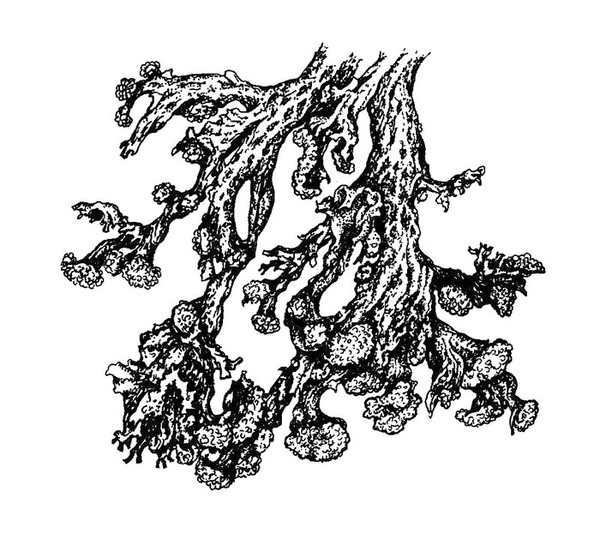Ramalina pollinaria (Westr.) Ach.
Lichenogr. Univ.: 608, 1810. Basionym: Lichen pollinarius Westr. - K. Vetensk.-Akad. Nya Handl., 16: 56, 1795.
Synonyms: Ramalina farinacea var. bolcana A. Massal.; Ramalina intermedia auct. non (Delise ex Nyl.) Nyl.; Ramalina pollinaria var. humilis Ach.
Distribution: N - Frl, Ven (Caniglia & al. 1999, Nascimbene 2005c, 2008c, 2011, Nascimbene & al. 2005b, 2006c, 2007, 2009c, 2010b, Nascimbene & Marini 2007), TAA (Nascimbene 2005b, 2006c, 2008c, 2014, Nascimbene & al. 2006e, 2007b, 2014, 2022, Nascimbene & Marini 2015, Nimis & al. 2015, Trindade & al. 2021), Lomb (Rivellini 1994, Valcuvia & al. 2003, Dalle Vedove & al. 2004), Piem (Morisi & Sereno 1995, Isocrono & Falletti 1999, Isocrono & al. 2003, Piervittori 2003, Morisi 2005, Isocrono & Piervittori 2008, Sandrone & al. 2009), VA (Piervittori & Maffei 1996, Piervittori & Isocrono 1997, 1999, Piervittori & al. 2001, Isocrono & al. 2008), Emil (Fariselli & al. 2020), Lig (Brunialti & al. 1999). C - Tosc (Benesperi & al. 2007, Benesperi 2011), Laz, Abr, Sar. S - Camp (Ricciardi & al. 2000, Nascimbene & al. 2010b, Brunialti & al. 2013, Ravera & Brunialti 2013), Pugl, Bas, Si (Nimis & al. 1994).
Description: Thallus fruticose, pale yellowish green to greenish white, rather polymorphic, of discrete lobes often coalescing to form extensive swards, to 5(-8) cm long (usually much less), simple or sparingly dichotomously or palmately branched from a narrow or expanded basal holdfast. Laciniae usually flattened, sometimes fan-like in terminal parts and up to 3(-5) mm wide, solid but often secondarily subfistulose at apex, irregular in thickness, somewhat shiny and cartilaginous, the largest ones often with a foveolate surface, occasionally with ellipsoid, laminal pseudocyphellae; soralia elongate, marginal to subterminal, spreading over the underside, becoming more roundish and more crowded terminally, small soralia may develop laminally; soredia farinose to subgranular, 30-50 μm diam. Cortex thin, 2-layered, the outer part paraplectenchymatous, the inner part cartilaginous; medulla white, compact. Apothecia not observed in Italian material. Photobiont chlorococcoid. Spot tests: K-, C-, KC- or KC+ pale yellow (cortex only), P-, UV-. Chemistry: cortex with usnic acid; medulla with evernic acid. Note: a widespread, cool-temperate to subarctic-subalpine, circumpolar lichen found on ancient isolated trees, and on vertical to rain-sheltered surfaces of base-rich or calciferous rocks; widespread, but never common in Italy, except in dry-warm sites of the Alps, where it mostly occurs on rocks. Several Italian records could refer to R. arsenii or R. europaea.
Growth form: Fruticose
Substrata: bark and rocks
Photobiont: green algae other than Trentepohlia
Reproductive strategy: mainly asexual, by soredia, or soredia-like structures (e.g. blastidia)
Subcontinental: restricted to areas with a dry-subcontinental climate (e.g. dry Alpine valleys, parts of Mediterranean Italy)
In underhangs rarely wetted by rain
Commonnes-rarity: (info)
Alpine belt: absent
Subalpine belt: rather rare
Oromediterranean belt: absent
Montane belt: rare
Submediterranean belt: very rare
Padanian area: absent
Humid submediterranean belt: extremely rare
Humid mediterranean belt: absent
Dry mediterranean belt: absent
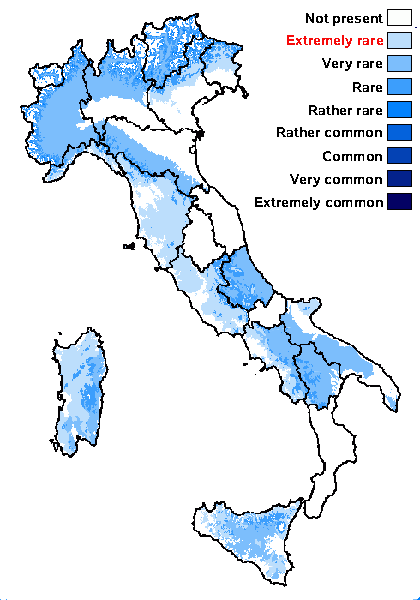
Predictive model
Herbarium samples
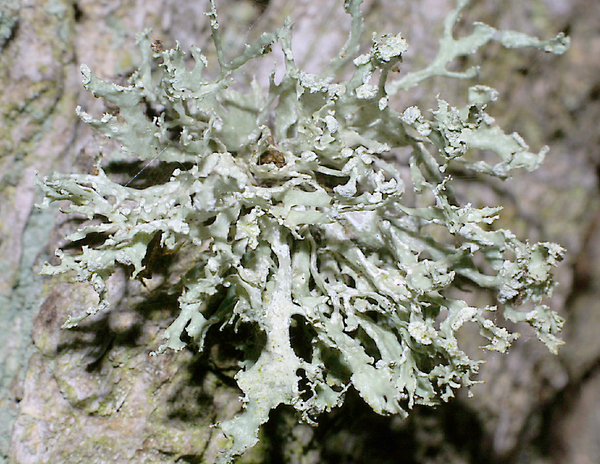
Felix Schumm - CC BY-SA 4.0
[9584], Germany, Baden-Württemberg, Stuttgart, zwischen Stuttgart und Leonberg, an Quercus, an der Schattenalle beim Bärensee, 48°45.368'N, 9°05.505'E, 430 m, TK 7220. Leg. et det. F. Schumm 15.06.2002
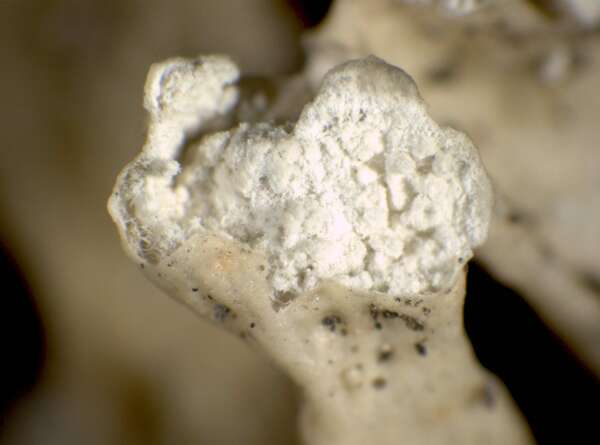

P.L. Nimis; Owner: Department of Life Sciences, University of Trieste
Herbarium: TSB (17887)
2001/12/10
young soralium
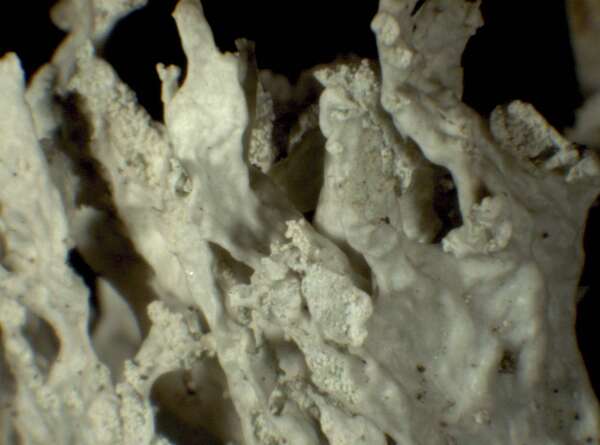

P.L. Nimis; Owner: Department of Life Sciences, University of Trieste
Herbarium: TSB (35292)
2002/07/14


P.L. Nimis; Owner: Department of Life Sciences, University of Trieste
Herbarium: TSB (17887)
2001/12/10
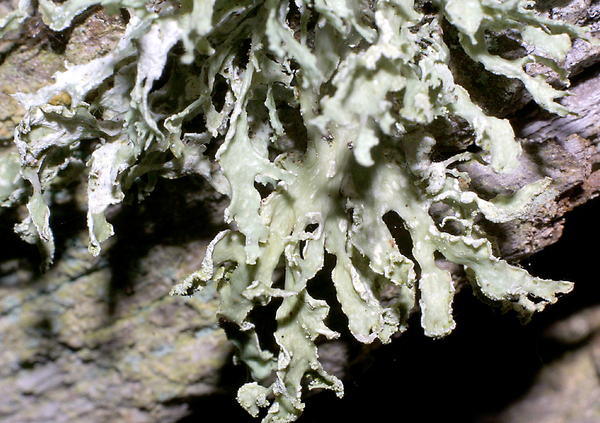
Felix Schumm - CC BY-SA 4.0
[9584], Germany, Baden-Württemberg, Stuttgart, zwischen Stuttgart und Leonberg, an Quercus, an der Schattenalle beim Bärensee, 48°45.368'N, 9°05.505'E, 430 m, TK 7220. Leg. et det. F. Schumm 15.06.2002
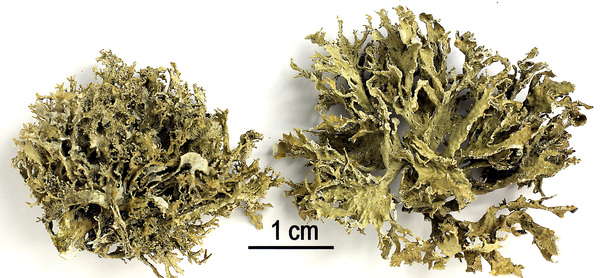
Felix Schumm - CC BY-SA 4.0
[11705], Germany, Baden-Württemberg, Kreis Göppingen, ca. 3,2 km nördlich von Ebersbach an der Kreuzung K1412/K1413 an der Königseiche auf der Kaiserstr.; 48°44.784' N, 9°30.978' E, 480 m, TK:7223/3. Leg et det. F. Schumm 06.06.2004, conf. ıA. Aptroot 05.2006.
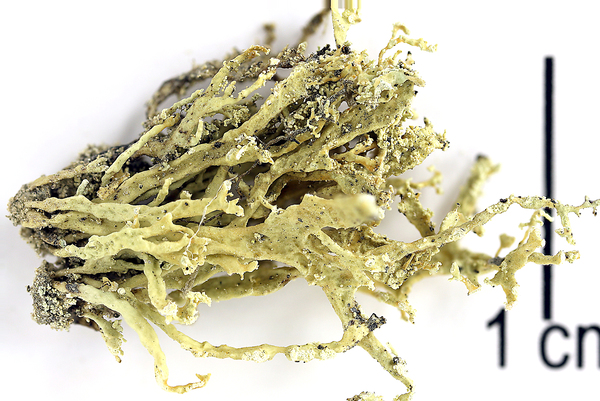
Felix Schumm - CC BY-SA 4.0
[14283], Österreich, Vorarlberg: Verwall-Gruppe, Silbertal ca. 7 km E von Schruns, zwischen dem Teufelsbach Wasserfall und dem Gasthof Fellimännle, 47°05' N, 10°00' E, ca 900-1100 m, GF 8926/1, an Silikatfelsen im koniferenreichen Mischwald in Bachnähe. Leg. F. Schumm & Schönbrodt (BLAM) 30.08.2008, det F. Schumm
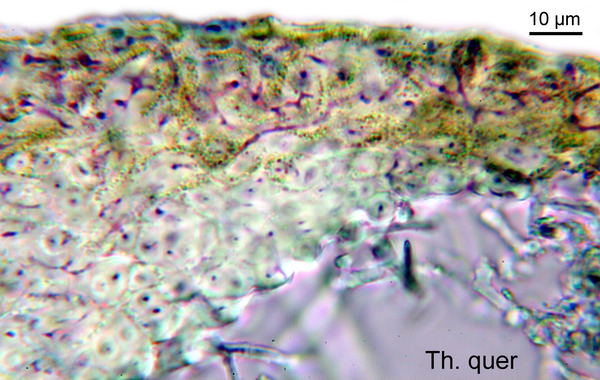
Felix Schumm - CC BY-SA 4.0
[14283], Österreich, Vorarlberg: Verwall-Gruppe, Silbertal ca. 7 km E von Schruns, zwischen dem Teufelsbach Wasserfall und dem Gasthof Fellimännle, 47°05' N, 10°00' E, ca 900-1100 m, GF 8926/1, an Silikatfelsen im koniferenreichen Mischwald in Bachnähe. Leg. F. Schumm & Schönbrodt (BLAM) 30.08.2008, det F. Schumm
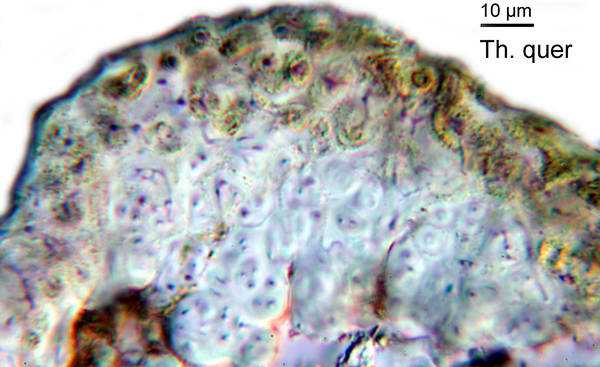
Felix Schumm - CC BY-SA 4.0
[14283], Österreich, Vorarlberg: Verwall-Gruppe, Silbertal ca. 7 km E von Schruns, zwischen dem Teufelsbach Wasserfall und dem Gasthof Fellimännle, 47°05' N, 10°00' E, ca 900-1100 m, GF 8926/1, an Silikatfelsen im koniferenreichen Mischwald in Bachnähe. Leg. F. Schumm & Schönbrodt (BLAM) 30.08.2008, det F. Schumm
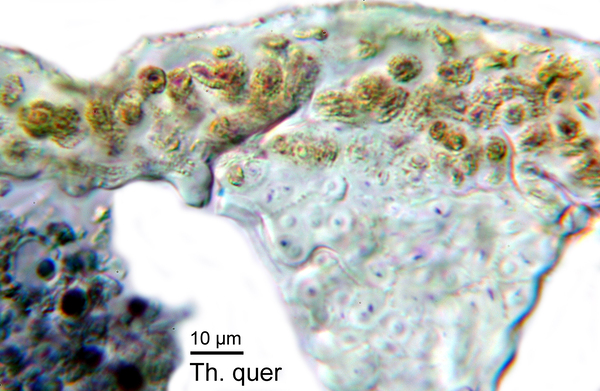
Felix Schumm - CC BY-SA 4.0
[14283], Österreich, Vorarlberg: Verwall-Gruppe, Silbertal ca. 7 km E von Schruns, zwischen dem Teufelsbach Wasserfall und dem Gasthof Fellimännle, 47°05' N, 10°00' E, ca 900-1100 m, GF 8926/1, an Silikatfelsen im koniferenreichen Mischwald in Bachnähe. Leg. F. Schumm & Schönbrodt (BLAM) 30.08.2008, det F. Schumm
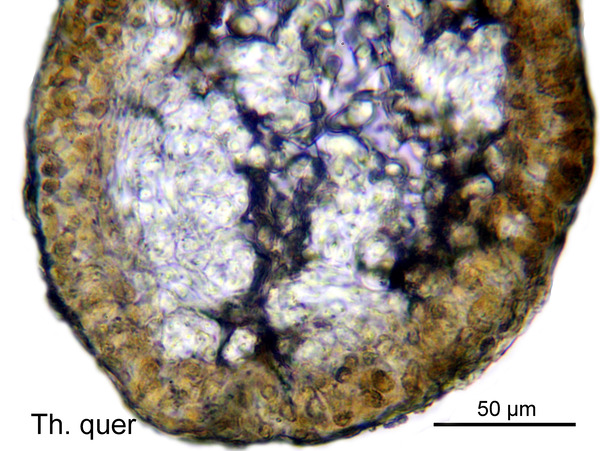
Felix Schumm - CC BY-SA 4.0
[14283], Österreich, Vorarlberg: Verwall-Gruppe, Silbertal ca. 7 km E von Schruns, zwischen dem Teufelsbach Wasserfall und dem Gasthof Fellimännle, 47°05' N, 10°00' E, ca 900-1100 m, GF 8926/1, an Silikatfelsen im koniferenreichen Mischwald in Bachnähe. Leg. F. Schumm & Schönbrodt (BLAM) 30.08.2008, det F. Schumm
Growth form: Fruticose
Substrata: bark and rocks
Photobiont: green algae other than Trentepohlia
Reproductive strategy: mainly asexual, by soredia, or soredia-like structures (e.g. blastidia)
Subcontinental: restricted to areas with a dry-subcontinental climate (e.g. dry Alpine valleys, parts of Mediterranean Italy)
In underhangs rarely wetted by rain
Commonnes-rarity: (info)
Alpine belt: absent
Subalpine belt: rather rare
Oromediterranean belt: absent
Montane belt: rare
Submediterranean belt: very rare
Padanian area: absent
Humid submediterranean belt: extremely rare
Humid mediterranean belt: absent
Dry mediterranean belt: absent

Predictive model
| Herbarium samples |

Felix Schumm - CC BY-SA 4.0
[9584], Germany, Baden-Württemberg, Stuttgart, zwischen Stuttgart und Leonberg, an Quercus, an der Schattenalle beim Bärensee, 48°45.368'N, 9°05.505'E, 430 m, TK 7220. Leg. et det. F. Schumm 15.06.2002


P.L. Nimis; Owner: Department of Life Sciences, University of Trieste
Herbarium: TSB (17887)
2001/12/10
young soralium


P.L. Nimis; Owner: Department of Life Sciences, University of Trieste
Herbarium: TSB (35292)
2002/07/14


P.L. Nimis; Owner: Department of Life Sciences, University of Trieste
Herbarium: TSB (17887)
2001/12/10

Felix Schumm - CC BY-SA 4.0
[9584], Germany, Baden-Württemberg, Stuttgart, zwischen Stuttgart und Leonberg, an Quercus, an der Schattenalle beim Bärensee, 48°45.368'N, 9°05.505'E, 430 m, TK 7220. Leg. et det. F. Schumm 15.06.2002

Felix Schumm - CC BY-SA 4.0
[11705], Germany, Baden-Württemberg, Kreis Göppingen, ca. 3,2 km nördlich von Ebersbach an der Kreuzung K1412/K1413 an der Königseiche auf der Kaiserstr.; 48°44.784' N, 9°30.978' E, 480 m, TK:7223/3. Leg et det. F. Schumm 06.06.2004, conf. ıA. Aptroot 05.2006.

Felix Schumm - CC BY-SA 4.0
[14283], Österreich, Vorarlberg: Verwall-Gruppe, Silbertal ca. 7 km E von Schruns, zwischen dem Teufelsbach Wasserfall und dem Gasthof Fellimännle, 47°05' N, 10°00' E, ca 900-1100 m, GF 8926/1, an Silikatfelsen im koniferenreichen Mischwald in Bachnähe. Leg. F. Schumm & Schönbrodt (BLAM) 30.08.2008, det F. Schumm

Felix Schumm - CC BY-SA 4.0
[14283], Österreich, Vorarlberg: Verwall-Gruppe, Silbertal ca. 7 km E von Schruns, zwischen dem Teufelsbach Wasserfall und dem Gasthof Fellimännle, 47°05' N, 10°00' E, ca 900-1100 m, GF 8926/1, an Silikatfelsen im koniferenreichen Mischwald in Bachnähe. Leg. F. Schumm & Schönbrodt (BLAM) 30.08.2008, det F. Schumm

Felix Schumm - CC BY-SA 4.0
[14283], Österreich, Vorarlberg: Verwall-Gruppe, Silbertal ca. 7 km E von Schruns, zwischen dem Teufelsbach Wasserfall und dem Gasthof Fellimännle, 47°05' N, 10°00' E, ca 900-1100 m, GF 8926/1, an Silikatfelsen im koniferenreichen Mischwald in Bachnähe. Leg. F. Schumm & Schönbrodt (BLAM) 30.08.2008, det F. Schumm

Felix Schumm - CC BY-SA 4.0
[14283], Österreich, Vorarlberg: Verwall-Gruppe, Silbertal ca. 7 km E von Schruns, zwischen dem Teufelsbach Wasserfall und dem Gasthof Fellimännle, 47°05' N, 10°00' E, ca 900-1100 m, GF 8926/1, an Silikatfelsen im koniferenreichen Mischwald in Bachnähe. Leg. F. Schumm & Schönbrodt (BLAM) 30.08.2008, det F. Schumm

 INDEX FUNGORUM
INDEX FUNGORUM
 GBIF
GBIF
 DOLICHENS
DOLICHENS
